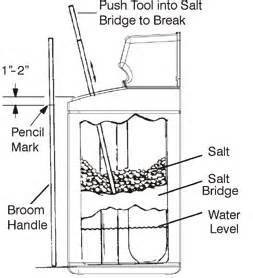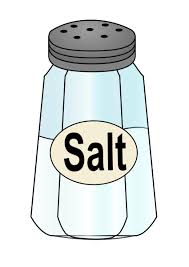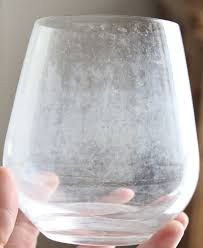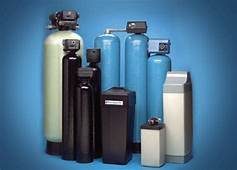If you have well water, you’re not alone. Over 13 million Americans use private wells as their source of drinking water. Households that use private wells are responsible for the safety of their own water.
 What is well water?
What is well water?
What does it mean to have well water in your home? Well water comes up straight from the ground directly into your home; essentially, it is not treated.
Problems with well water
Minerals
Untreated water has a higher abundance of minerals than treated tap water. All these minerals often affect the taste of your water. Although the minerals are safe for consumption, they can cause other problems in the home.
One such problem of hard water is that it keeps soap from dissolving properly. A telltale sign of this is that you feel a film on your body when you step out of the shower.
Soap buildup can also clog drains. A water softener can filter out those pesky minerals, keeping your body and drains soap free.
Contaminants
Contamination is also a common issue in well water. From microorganisms such as bacteria and viruses to dissolved solids, these contaminants can cause some serious health issues, such as gastrointestinal illness.
So how do we solve these problems?
Water softeners can help with the minerals in well water. Contaminated water, however, takes more intense intervention.
Water Softeners
Many people wonder if you use a water softener with well water, The answer is yes–yes you can. Water softeners help to filter out minerals, such as magnesium and calcium. Removal of these minerals turns your water from “hard” to “soft”. You’ll notice a big change in the look and feel of laundry and dishes. You’ll also be saving money on soaps and detergents, because soft water requires much less of each. Water softeners can even make your water taste better by filtering out the minerals.
Testing for contaminants
What about the microorganisms? First, test the water and see if it is contaminated with microorganisms. This simple test only costs $30, and results usually come in about a week or two after the water sampling.
You should test for microorganisms once a year, or when you repair any part of the plumbing system, move into a new home, drill a new well, or if members of your household have reoccurring gastrointestinal illness.
Treating for contaminants
Chlorine
If your well water does test positive for microorganisms, you should immediately disinfect the water with chlorine bleach. After shock chlorinating the water, wait one to two weeks in order to retest the well water for microorganisms.

Another, perhaps even easier, way to make your well water safe for consumption is to distill it yourself. Essentially, this means boiling your well water before using it for cooking or drinking. Distilling the water is an easy way to make sure your well water is clean and safe for use. You do not have to distill the water for bathing, however.
Deal with the source
It is essential to find the source of the problem and eliminate it. Most problems with microorganisms are due to faulty maintenance and/or construction, which can be easily fixed. For example, you may have to:
-
- replace a leaky well cap
- divert surface water away from your well
- move livestock and/or pets away from the well area
Conclusion
Overall, if you have well water, taking care of it is not as hard as you might think. Well water is easy to take care of, as long as you take some precautions.
Use a water softener with your well water to prevent hard water damage to your body and your pipes.
Test your water regularly for microorganisms and other contaminants. Know to shock chlorinate the water. Also, be sure to boil you well water before drinking or cooking with it.
Give us a call for all your well-water needs!
Whether you have a well or are thinking about putting in a well, Knoxville Water Treatment can help with all your questions and well-water needs. Give us a call today!

 What is well water?
What is well water?
 This crust creates an empty space between the water and the salt in the brine tank. When this happens, salt cannot dissolve into the water in the brine tank. This means the water softener won’t make the brine needed to rinse out the resin in the water softener. Without brine, the resin beads can’t do what they are meant to do, which is soften water.
This crust creates an empty space between the water and the salt in the brine tank. When this happens, salt cannot dissolve into the water in the brine tank. This means the water softener won’t make the brine needed to rinse out the resin in the water softener. Without brine, the resin beads can’t do what they are meant to do, which is soften water. If the water softener has a salt bridge in the brine tank, its basically like the house is running on hard water again. The excess minerals in hard water drastically counter-act the way the household soaps and detergent perform. Another way to tell is by the appearance of clothes and dishes. If the dishes have a foggy or musty look to them, or the clothes are dingy and stiff, that means that the water softener is not working. Salt bridges prevent the water softener from regularly regenerating, which in turn halts all of the other functions.
If the water softener has a salt bridge in the brine tank, its basically like the house is running on hard water again. The excess minerals in hard water drastically counter-act the way the household soaps and detergent perform. Another way to tell is by the appearance of clothes and dishes. If the dishes have a foggy or musty look to them, or the clothes are dingy and stiff, that means that the water softener is not working. Salt bridges prevent the water softener from regularly regenerating, which in turn halts all of the other functions. When the humidity level rises, the condensation in the brine tank affects the way the salt interacts with itself. Condensation causes the salt crystals to clump together, thus creating a salt bridge. The simplest reason though would be that too much salt was put into the tank and it can’t dissolve it all in a timely manner.
When the humidity level rises, the condensation in the brine tank affects the way the salt interacts with itself. Condensation causes the salt crystals to clump together, thus creating a salt bridge. The simplest reason though would be that too much salt was put into the tank and it can’t dissolve it all in a timely manner.


 Problems like spots on the dishes and faded color on laundry. Hard water also causes stiff, scratchy towels, itchy skin, and even dull hair. The excess minerals in the water even counteract the effectiveness of soaps. The result: more soap and detergent and shampoo required to clean. Unfortunately, more soap doesn’t effectively deal with the hard water problem which means you still end up with dirty, dingy-looking dishes, clothes, and people.
Problems like spots on the dishes and faded color on laundry. Hard water also causes stiff, scratchy towels, itchy skin, and even dull hair. The excess minerals in the water even counteract the effectiveness of soaps. The result: more soap and detergent and shampoo required to clean. Unfortunately, more soap doesn’t effectively deal with the hard water problem which means you still end up with dirty, dingy-looking dishes, clothes, and people.


 can drastically dry out your skin and hair, causing your hair to break off easier and your skin to be itchy. Water softeners often provide more cost efficiency, because less mineral buildup in the water tanks and pipes makes it easier for the water heater to properly meet your household‘s hot water needs.
can drastically dry out your skin and hair, causing your hair to break off easier and your skin to be itchy. Water softeners often provide more cost efficiency, because less mineral buildup in the water tanks and pipes makes it easier for the water heater to properly meet your household‘s hot water needs. The initial cost for purchasing a water softener can range anywhere from a few hundred dollars to a few thousand dollars. Most water softeners are salt based, so not only are you buying the unit, but you will also have to continually purchase salt for the water softener. The most popular types of systems also require regular maintenance.
The initial cost for purchasing a water softener can range anywhere from a few hundred dollars to a few thousand dollars. Most water softeners are salt based, so not only are you buying the unit, but you will also have to continually purchase salt for the water softener. The most popular types of systems also require regular maintenance. which prevents the system from working properly.
which prevents the system from working properly. Another con to having a water softener is the sodium it can add to your diet. While it’s true that salt-based water, softeners are not the only kind available, they are by far the most commonly installed. If you or someone in your household has a sodium restrictive diet, this is not the water softener for you.
Another con to having a water softener is the sodium it can add to your diet. While it’s true that salt-based water, softeners are not the only kind available, they are by far the most commonly installed. If you or someone in your household has a sodium restrictive diet, this is not the water softener for you.

 it comes with a catch. An AMT doesn’t remove hard water chemicals, it just alters their composition, so they won’t leave as much “scale” effects on dishes. This option does not prevent buildup in water-using appliances where water stays for up to forty-eight hours, such as a hot water heater. There is also less scientific evidence that this method works efficiently and effectively.
it comes with a catch. An AMT doesn’t remove hard water chemicals, it just alters their composition, so they won’t leave as much “scale” effects on dishes. This option does not prevent buildup in water-using appliances where water stays for up to forty-eight hours, such as a hot water heater. There is also less scientific evidence that this method works efficiently and effectively.




 3. TOOLS
3. TOOLS Now you need to find a place in your house where you will install the system you’ve chosen. Things to remember when selecting the location for your water softener include:
Now you need to find a place in your house where you will install the system you’ve chosen. Things to remember when selecting the location for your water softener include: (Note: These are general installation steps. We like these DIY
(Note: These are general installation steps. We like these DIY  Step 4: Tie in to water supply.
Step 4: Tie in to water supply. Step 8: Add salt (salt-based system)
Step 8: Add salt (salt-based system) Part 1 Recap: Hard Water
Part 1 Recap: Hard Water Calcium and magnesium in hard water create lots of problems. Water softeners remove the calcium and magnesium from the hard water and replace them with a mineral that doesn’t cause scaling. The minerals trade places through a process known in chemistry as
Calcium and magnesium in hard water create lots of problems. Water softeners remove the calcium and magnesium from the hard water and replace them with a mineral that doesn’t cause scaling. The minerals trade places through a process known in chemistry as 




 Hair washed in hard water eventually becomes dull and listless. Dishes, clothing, and even cars sport chalky-white streaks and spots.
Hair washed in hard water eventually becomes dull and listless. Dishes, clothing, and even cars sport chalky-white streaks and spots.



